For most of us, the ideal tropical beach is a stretch of pearly-white sand fringed with coconut palms and turquoise waters. But black sand beaches can be equally beautiful, so if you haven’t seen any, there are few better places in the world than Hawaii. Hawaiian Islands are famous for having some of the most fascinating black sand beaches, but the competition is tight between the Big Island and Maui.
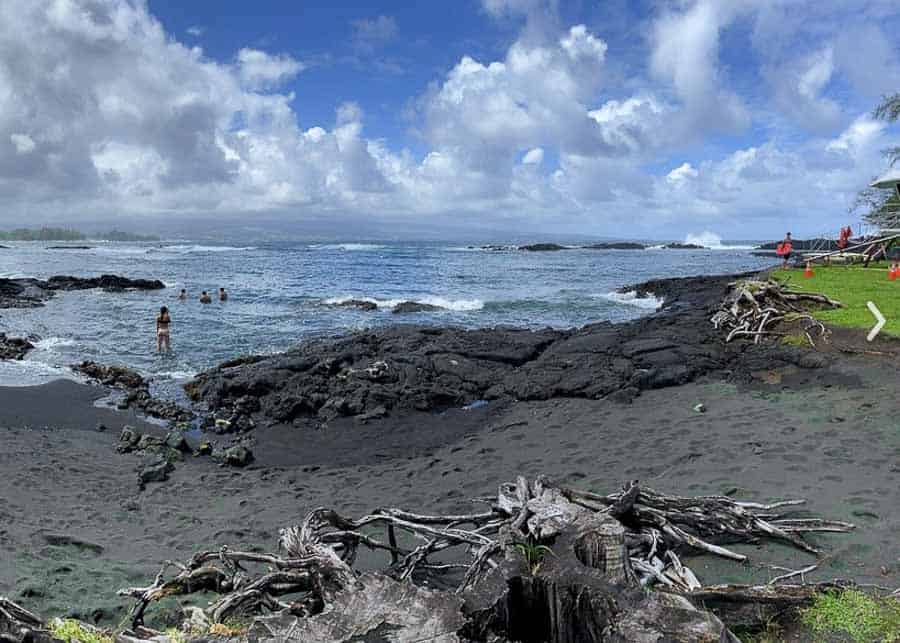
So if your goal is to see black sand beaches and are not sure whether to choose the Big Island or Maui, you won’t be disappointed with either one. And since I previously wrote about the black sand beaches on Maui, in this article I’ll take you on a tour of the ones on the Big Island of Hawaii. But before I tell you where to find them, let me give you a little insight into how they were formed.
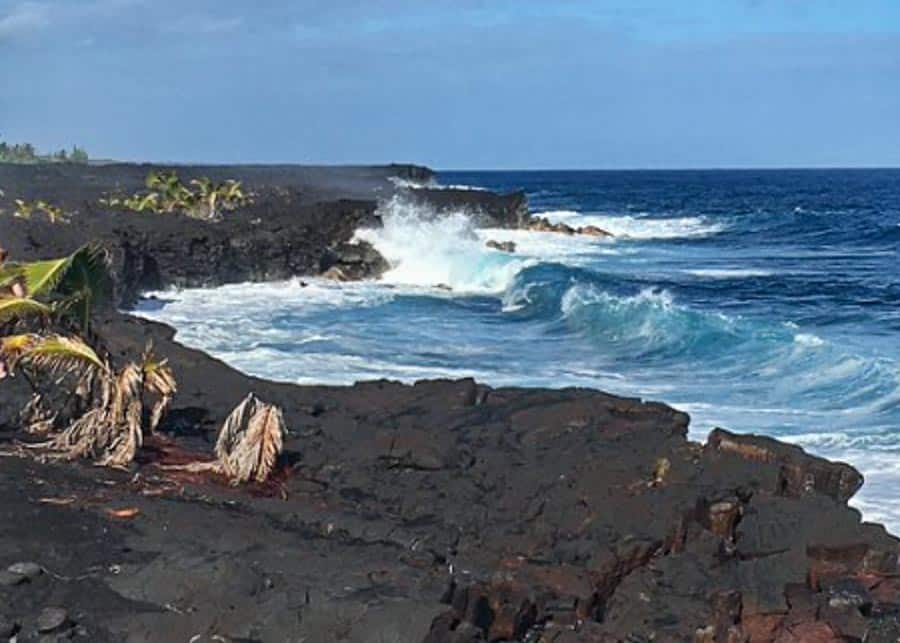
Table of Contents
The Origin of Black Sand Beaches in Hawaii
Seeing a true black beach for the first time is mesmerizing and even a bit intriguing. It somehow doesn’t seem right. The sand is black instead of pearly-white and the water looks grey instead of blue. That’s such a big contrast, when compared with those blue lagoons that you usually see on tropical islands!
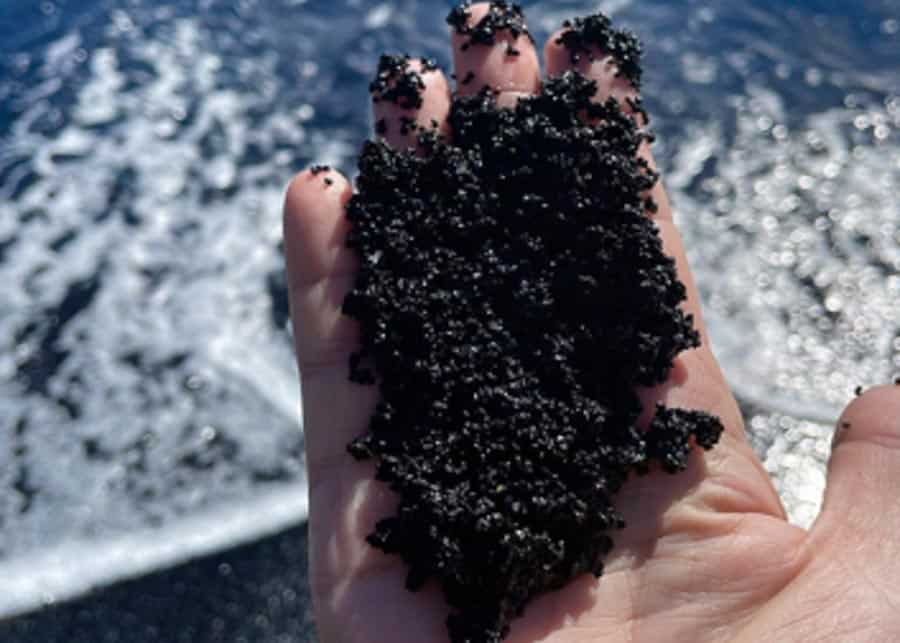
But why do some beaches have dark sand? Black sand beaches are rare occurrences and Hawaii is one of the few places in the world where they are found. And that’s because the Hawaiian Islands are of volcanic origin. The black beaches occur when lava flows meet the ocean cooling rapidly and exploding into small pieces of cinder. Over time, the ocean waves break these fragments into fine black sand.
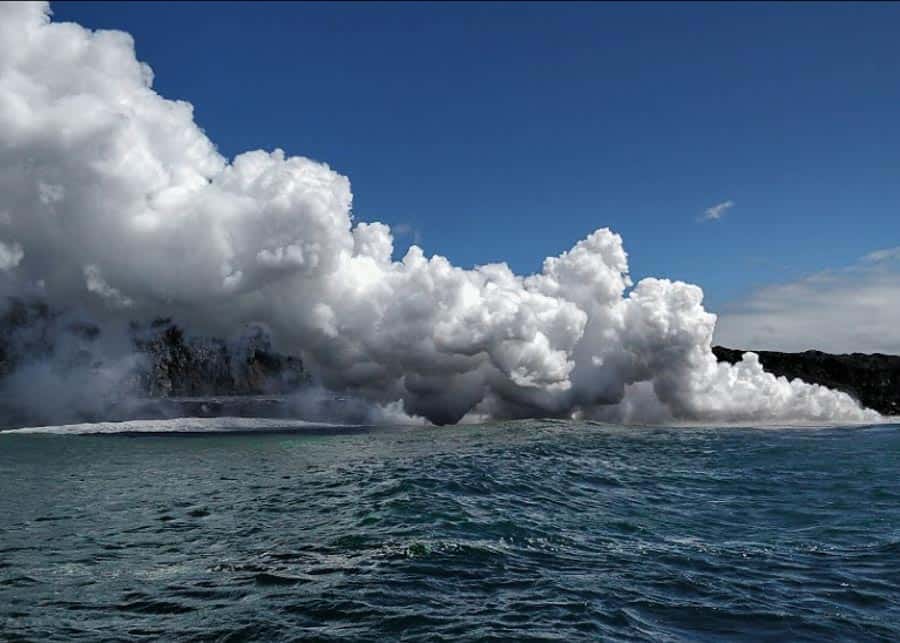
This process can still be observed on the Big Island, where Kilauea volcano continues to erupt even today. Its last big eruption in 2018 covered 13.7 square miles of the Big Island with new lava flows, destroying 700 houses in its path. But at the same time, the eruption added 1.3 square miles of new land to the island and created new black sand beaches.
The 7 Most Beautiful Black Sand Beaches in Hawaii
One of the best things to do on the Big Island is visit some of the black sand beaches. So if you are headed to this island and want to see them, here are the ones that we consider the most beautiful:
Kaimu Beach
Kaimu is a relatively new black sand beach in the Puna District of Hawaii. The beach was formed in 1990, when a river of lava completely covered the shoreline, burying the original Kaimu Beach and the entire village of Kalapana.
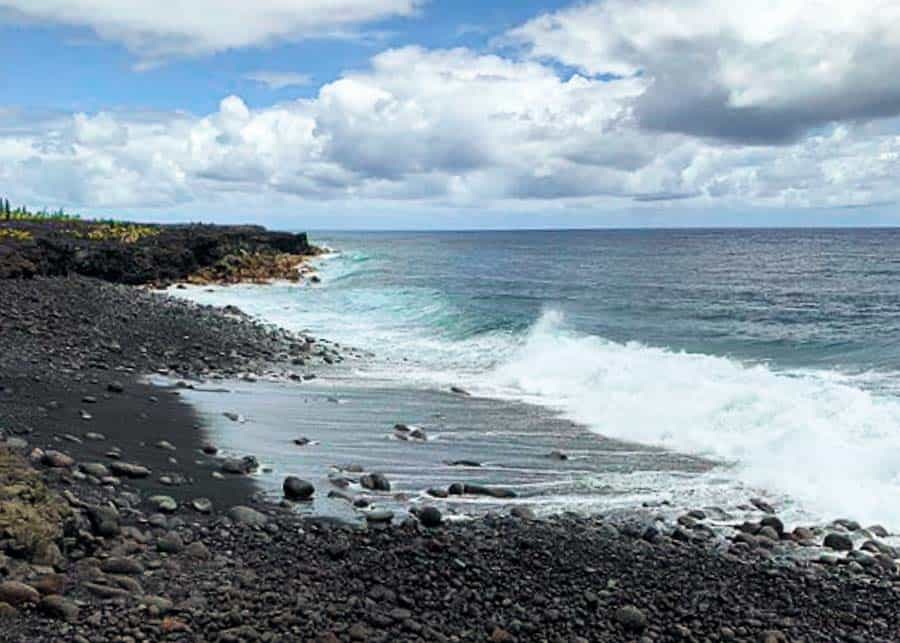
The original Kaimu Beach was a local favorite, with fine sand and green coconut trees. After the lava cooled, locals wanted to bring the ‘new’ beach back to life, so they planted coconut trees all around the place.
The new black sand beach is relatively small and is surrounded by a field of lava, but there is still plenty of fine sand on which you can walk or lie down. All around the beach is a field of lava, which is a good example of how black sand beaches in Hawaii have occured.
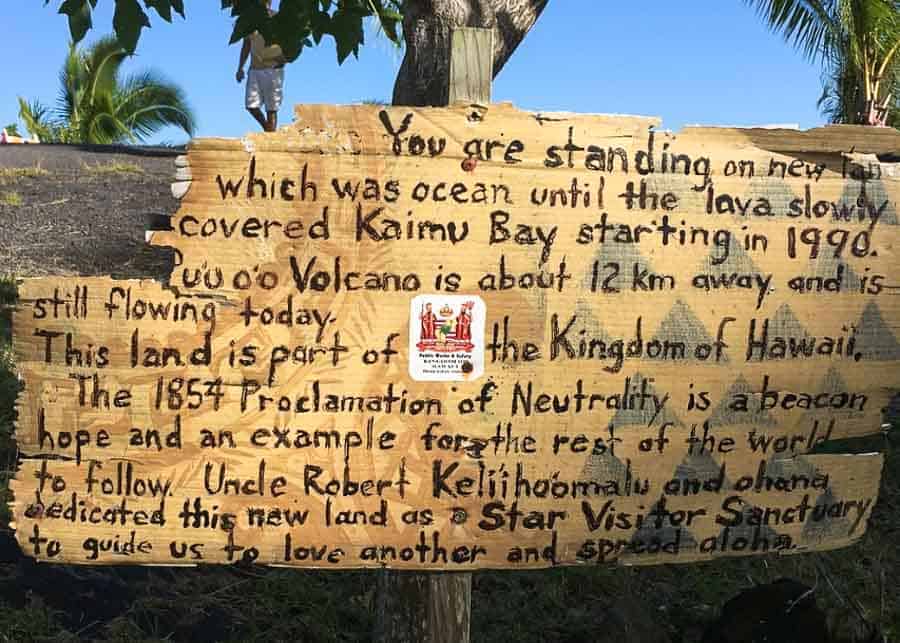
To get to the beach, you need to drive on Highway 130 and park at the dead end in the road. From here it’s about a quarter mile walk across the field of cracked, thick lava, until you reach new Kaimu Beach.
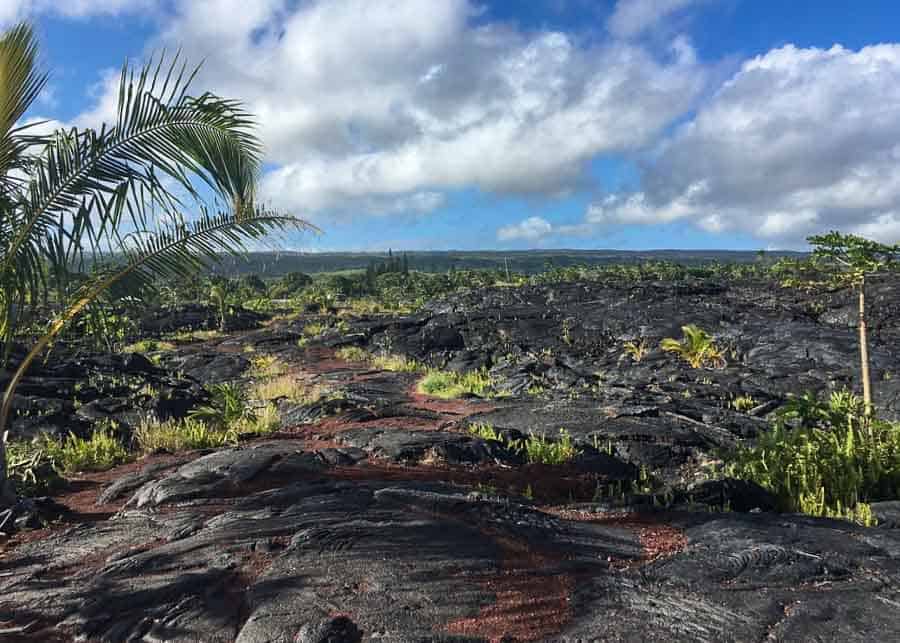
The path is a little rough, but it’s interesting to walk. The black thick layer of lava is dotted with green fern, regrowing coconut trees, and all sorts of artwork depicting scenes from the Hawaiian history and the old Hawaiian legends.
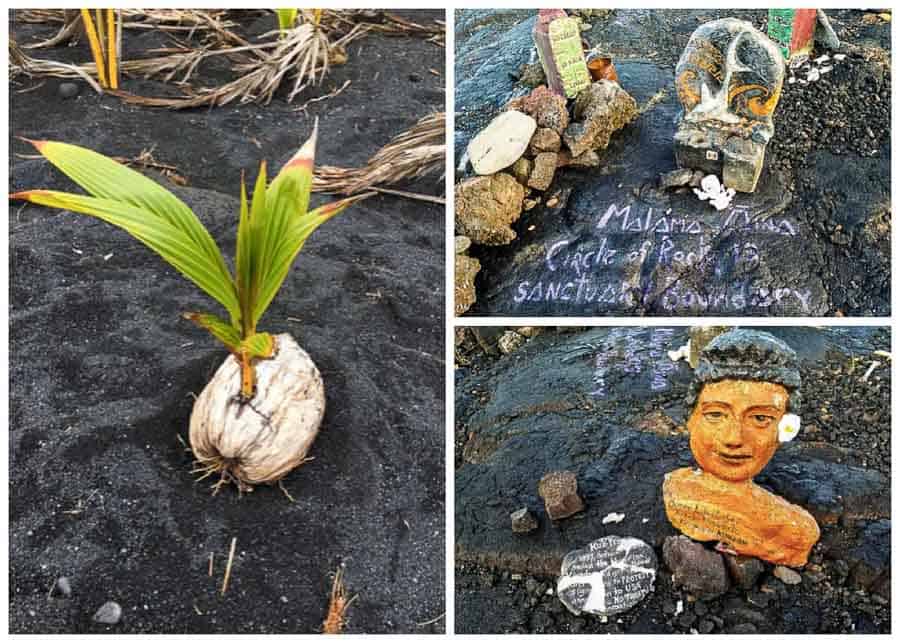
Kaimu is a must-see beach that every visitor to Hawaii should experience in order to get a sense of the great power of nature. It also gives you a unique opportunity to walk on the lava roads in Hawaii. Be advised however that the ocean is quite dangerous here, with strong currents and big pounding waves.
Kehena Beach
Located at mile marker 19 on highway 137, Kehena is another example of relatively new black sand beach in the Puna District. The beach has appeared in 1955, when lava flowed down the sea cliffs and into the ocean here. The beach is not big, but it’s quite beautiful. You can often see spinner dolphins here, which is why residents also call this Dolphin Beach.
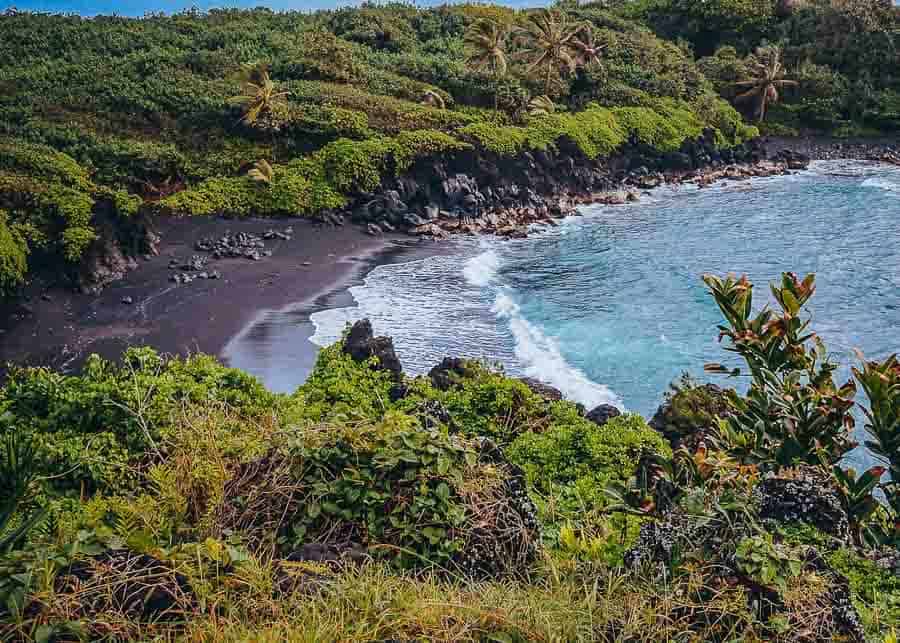
Since it’s older than other black sand beaches in Hawaii, Kehena had time to develop a lot of greenery. There are lots of ironwood trees and coconut palms around, as well as vines growing down the cliffs. The dense vegetation offers a lot of privacy, which is why this is a “clothing optional” beach.
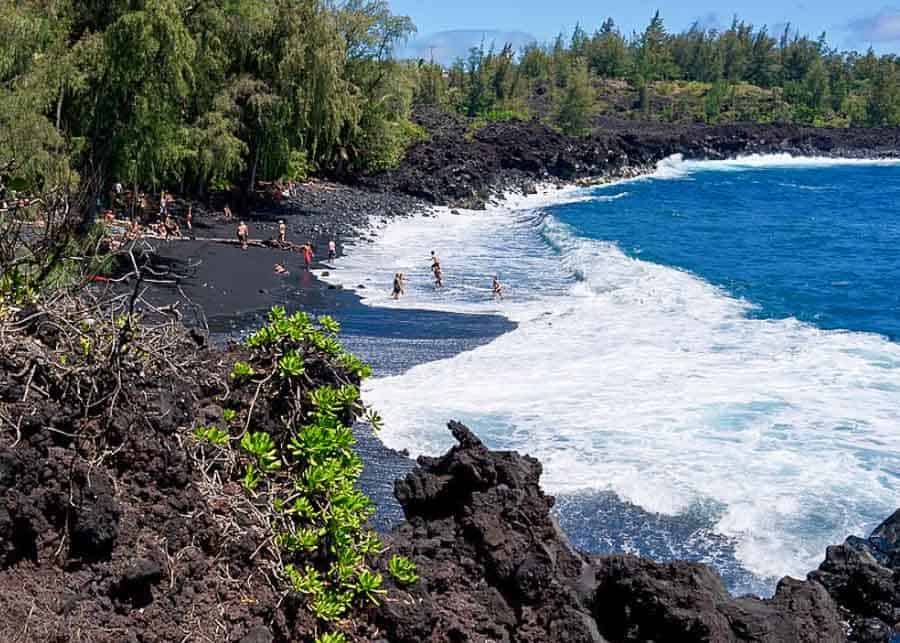
The waves are really rough at this beach and there are no lifeguards on duty, so be careful when swimming! Also, at the edge of the water there are small rocks that make it hard to gain traction when entering or exiting the water. I strongly recommend wearing water shoes here. As in fact you should do when visiting all the other black sand beaches in Hawaii.
The hike down to the beach is relatively easy, but be careful towards the end! The concrete stairs that led to the beach broke off and now hang more than 10 feet above sea level.
Punaluu Beach
Because of its beauty, interesting geology and history, Punaluu is one of the most renowned black sand beaches on the Big Island of Hawaii. This beach is possibly the original landing spot of the first Polynesian settlers in Hawaii.
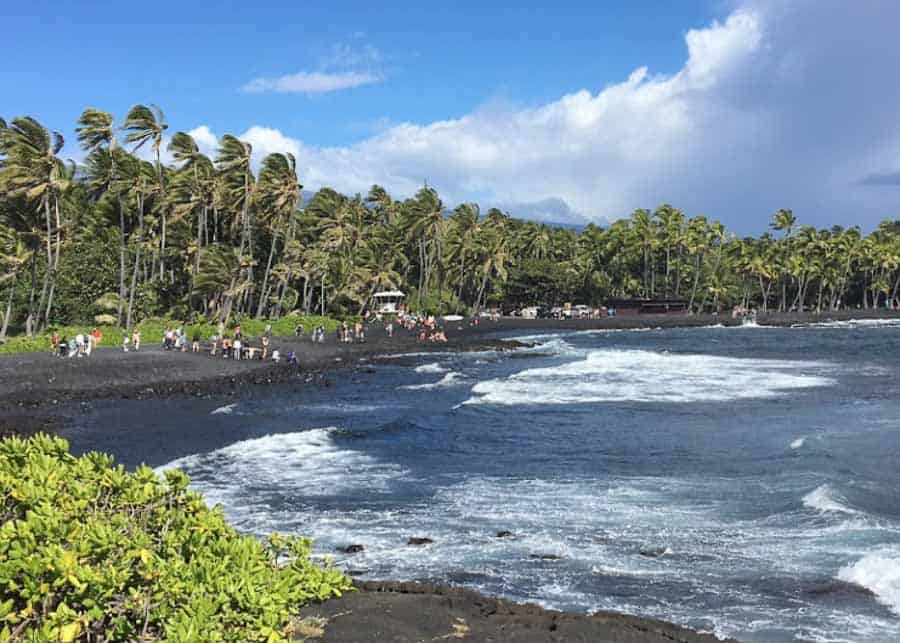
Access to the beach is off the main Highway 11, between mile markers 56 and 57, at the sign for Punalu‘u Beach. There is gravel parking lot with plenty of space and restrooms.
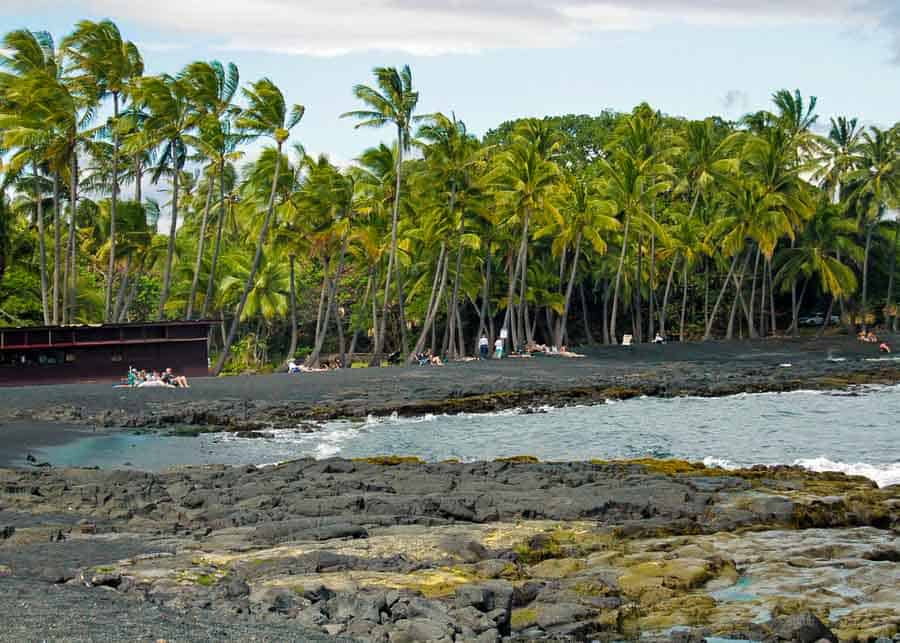
The beach is exposed to strong ocean currents, so the waters are colder here than in other parts of the island. While swimming is not ideal, the beach is good for snorkeling and for sightseeing. You can walk across the pahoehoe lava rocks to watch the waves crash upon the rocky shore. This is a great place to see Honu (Green Sea Turtles) as they come to the shore to catch some zzzzzz’s.
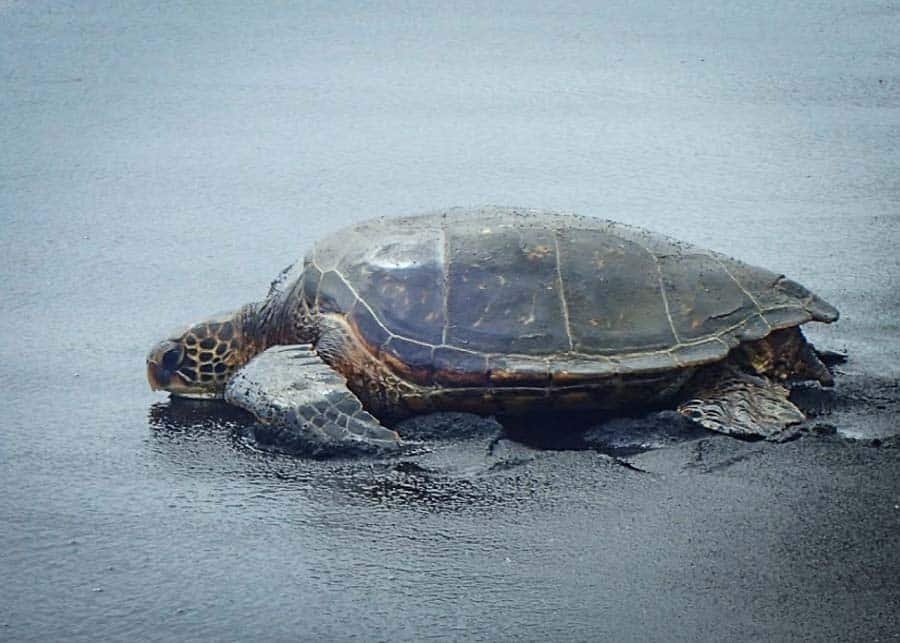
Waipi’o Valley Black Sand Beach
Located on the north shore of Hawaii, Waipi’o Valley is one of the most picturesque places on the Big Island. The valley features a black sand beach, lush tropical vegetation, wild horses, waterfalls, and a stream – the perfect mix for a good hike. This valley is reminiscent of the many beautiful valleys we came across on the road to Hana, in Maui.
Waipi’o is one of the hardest to reach black sand beaches on the Big Island, involving a difficult hike on a steep grade. The hike to the valley floor is 1.5 miles (2.4 kilometers) and takes about 30-45 minutes.
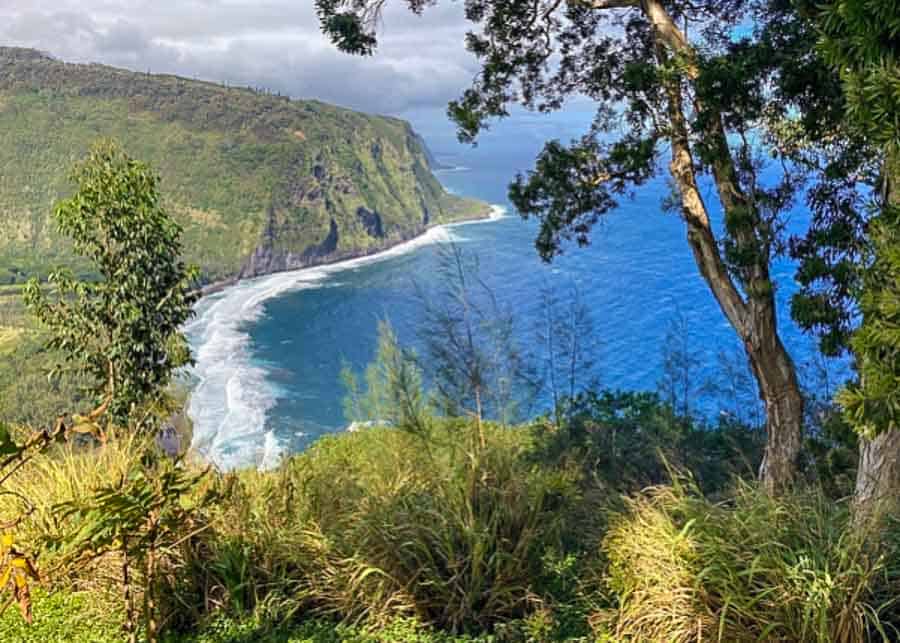
When you reach the bottom you’ll find yourself at a fork. If you turn left, you’ll pass by some taro fields and eventually reach the Hi‘ilawe Falls. This is one of the tallest and most impressive waterfalls on the Big Island. Unfortunately, because it’s on private land, it can only be visited on a guided tour or with the owner’s permission. But visiting the beach doesn’t require any permission, so when you get to the fork turn right.
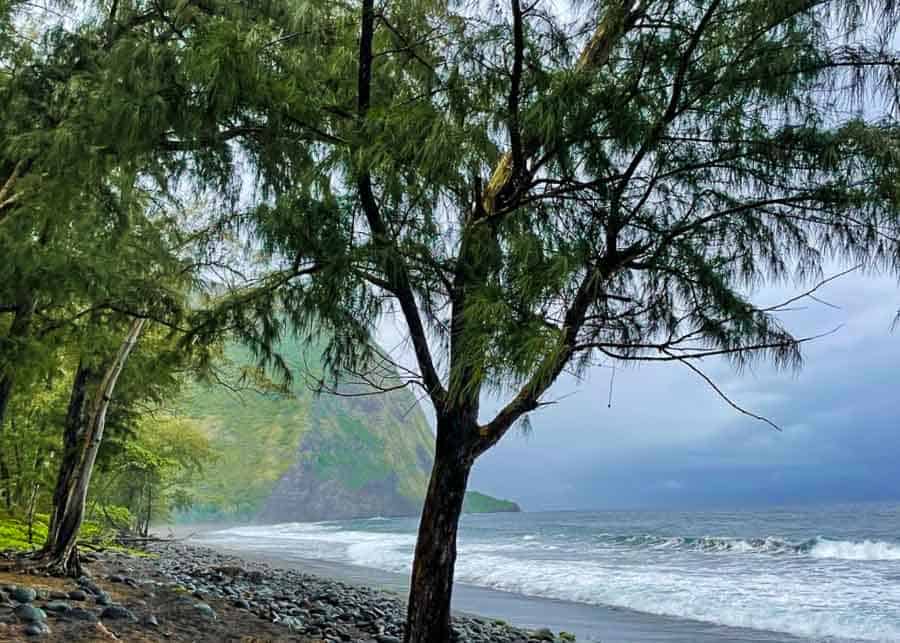
The black sand beach is at the mouth of the valley where a cool stream flows into the ocean. The surf at Waipi’o is notoriously rough and therefore we do not recommend swimming at this beach. However, this is an amazing spot to sit and enjoy the beautiful scenery, or take home some of the most amazing pictures in Hawaii.

The valley is an ancient burial ground so it’s important to stay on the marked paths and avoid trespassing. Just watch the signs that clearly tell you where you can and can’t go.
To get to the Waipi’o Valley from Kona, you nee o take Hawaii’s Belt Road (Highway 190) for 60 miles to Honoka’a, turn left turn at the junction and drive to the end.
Pololu Valley Black Sand Beach
The valley of Pololu is the last of a string of seven major valleys on the northern shore of Hawaii that are the result of thousands of years of erosion.
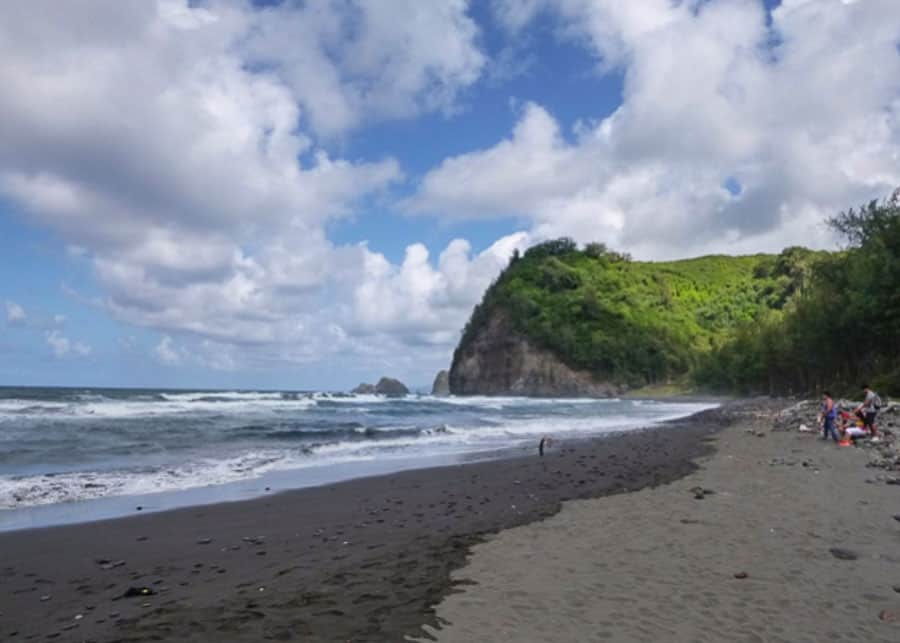
The valley has an amazingly scenic beach, but reaching it involves a difficult hike that goes almost straight down. During heavy rains, the dirt path sometimes washes away, so do not attempt this hike after the rain.
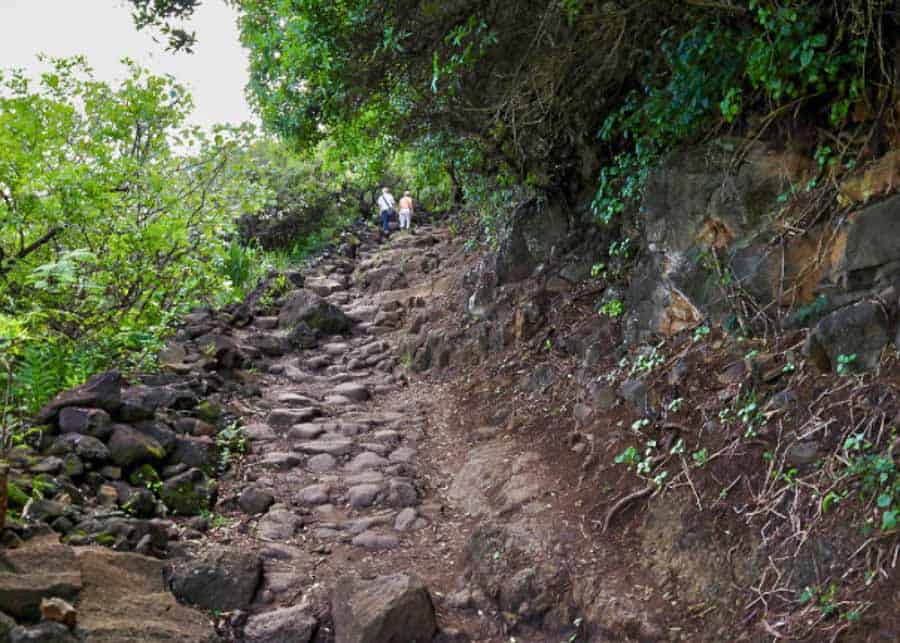
Pololu Valley is on Highway 19, about 60 miles away from Kona. Once you reach the end of the road, you’ll arrive at a picturesque lookout point. The views of the cliffs and the sea below from this point are spectacular. You can see the many folds and creases of the inner part of the valley dropping into a rich, green floor.
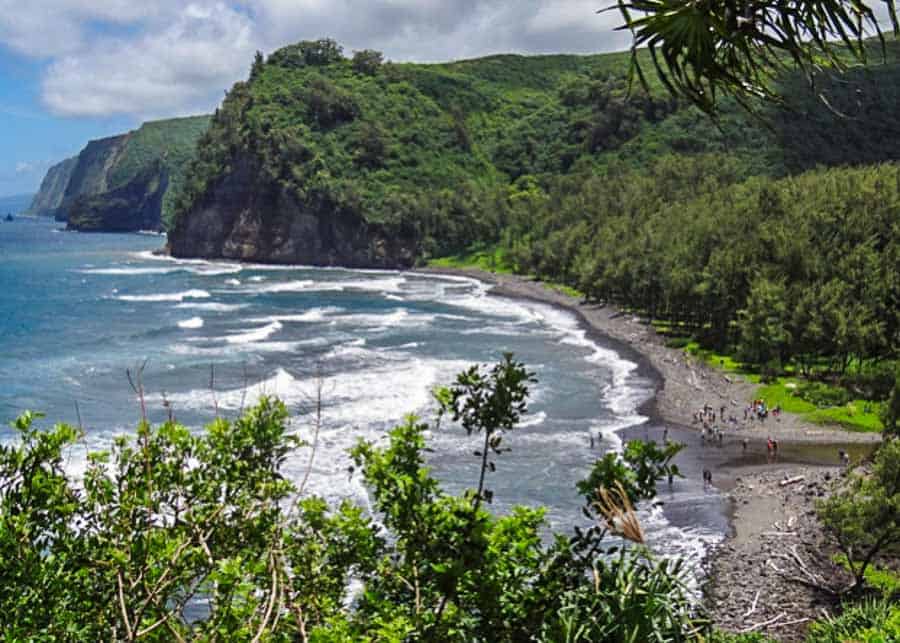
The beach is really picturesque, with a mixture of large lava rock stones and black sand. The Pololu stream runs the length of the valley floor and empties into the ocean. Unfortunately, the water on the northern end of the island can be extremely dangerous. Swimming or surfing here can be very dangerous.
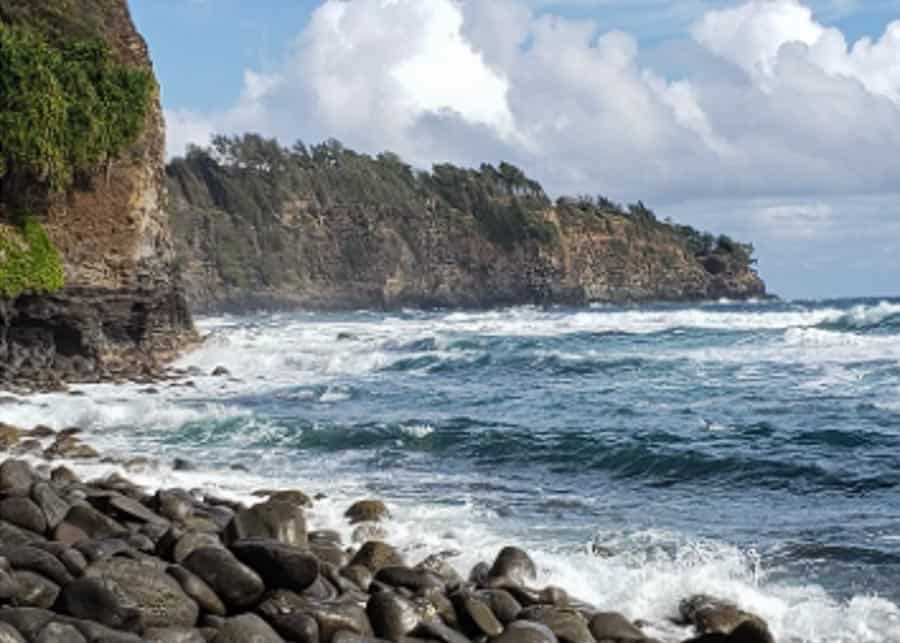
But in contrast with the unfriendly water, the beach is very picturesque. A really beautiful place to take pictures or walk along the the rocky shore.
Pohoiki Beach
Pohoiki is a beautiful oceanfront park located in the Puna District of Hawaii. The beach includes a recreation area, several ocean thermal ponds, and a boat launch, which is very rare in southeastern Hawaii.
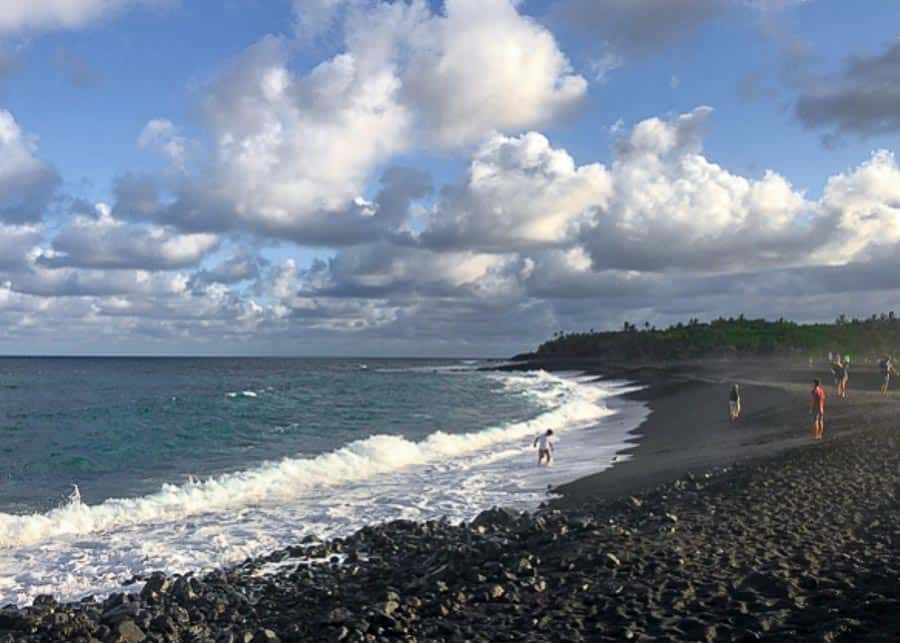
Pohoiki (or Isaac Hale Beach Park) barely escaped being totally buried beneath lava. During the 2018 lower Puna eruption, a thick layer of lava covered part of the shoreline. The lava flow stopped just 70 meters away from the harbor, covering part of the park, the trees, and the cabins in its path.
If you visited this beach before 2018, you won’t believe the lava build up on both sides of the park! The new black sand beach is truly beautiful. However, being on the windward side of the island, it gets very big waves. That makes it rather dangerous for swimming, but instead it’s popular for surfing.
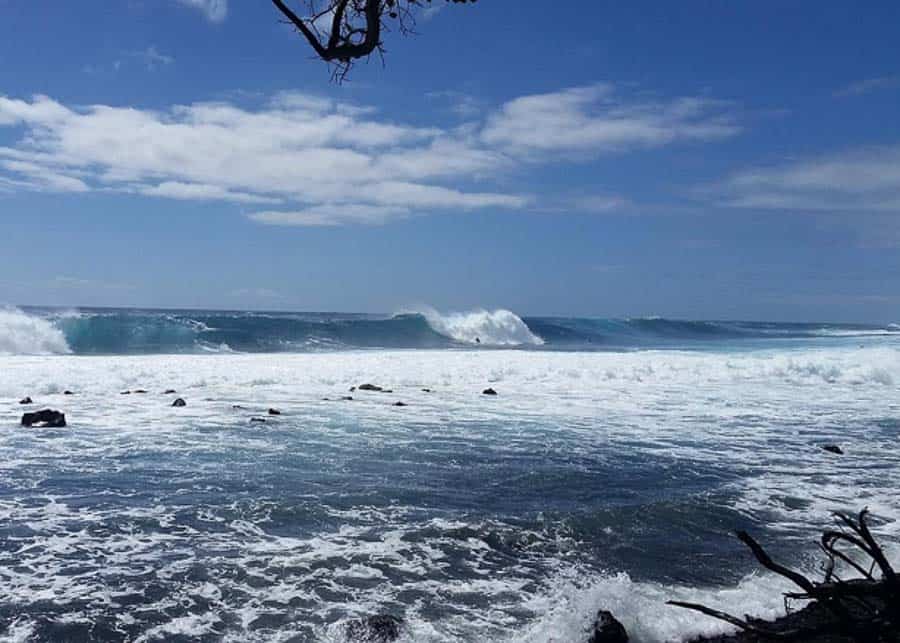
During the eruption of 2018 the plumbing was destroyed, so there is no running water at Pohoiki beach. Only portable toilets are available.
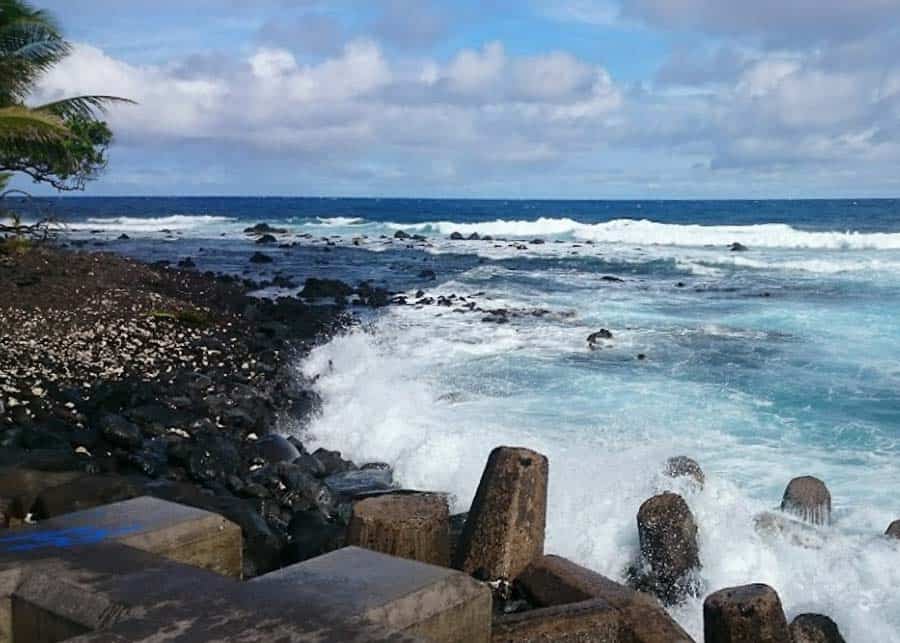
To access the park you’ll have to drive over the lava flow, which requires a 4-wheel drive.
Richardson Beach Park
This is a nice local park located just outside the town of Hilo. Its beautiful black sand beach is one of the prettiest on the Big Island, equipped with clean bathrooms and showers where you can rinse off after swimming or snorkeling. There are also several tide pools where children can play away from the surf.
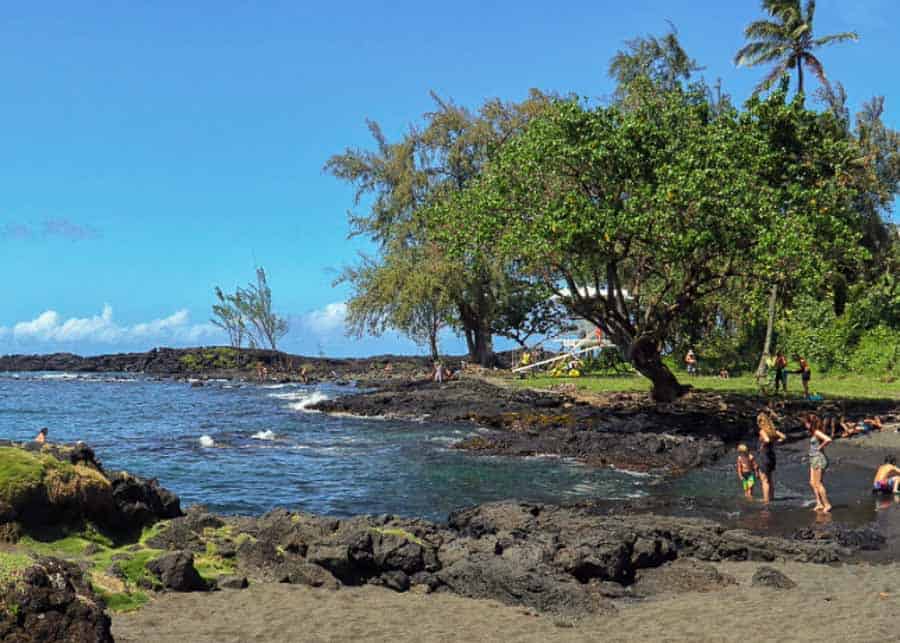
The reef that protects the bay, makes swimming and snorkeling here ideal. The waters are very calm and the the coral reef along the rock wall is alive and full of colorful fish. We saw several types of fish and many huge Honu (Hawaiian Green Sea-turtles) while swimming.
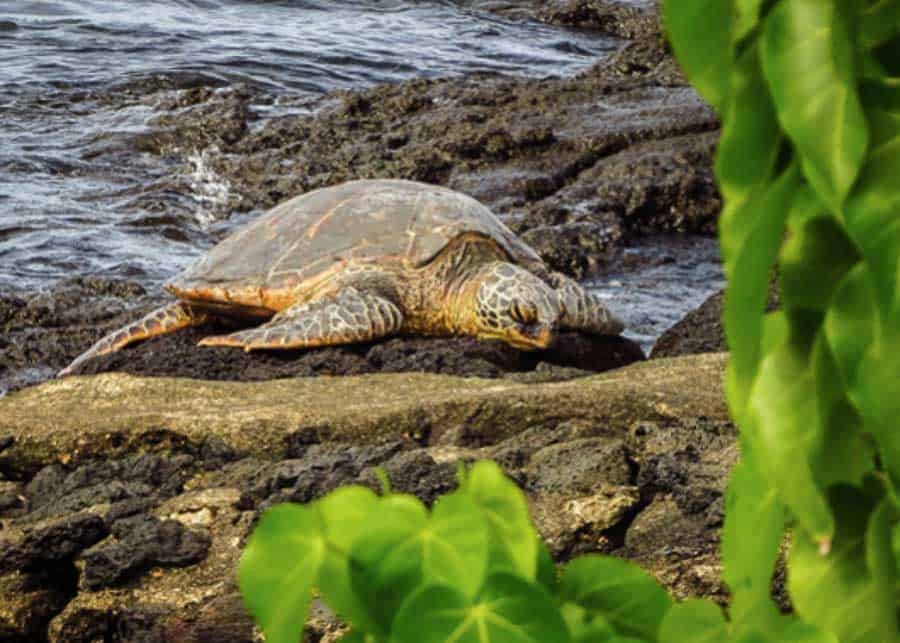
The beach is not very big, so most people prefer lying on the grass and in the shady spots provided by the trees. There’s narrow entrance to the water where a lot of folks are just hanging out, blocking the in/out traffic.

Since the shore is rocky, it’s good to wear coral shoes down to the beach.
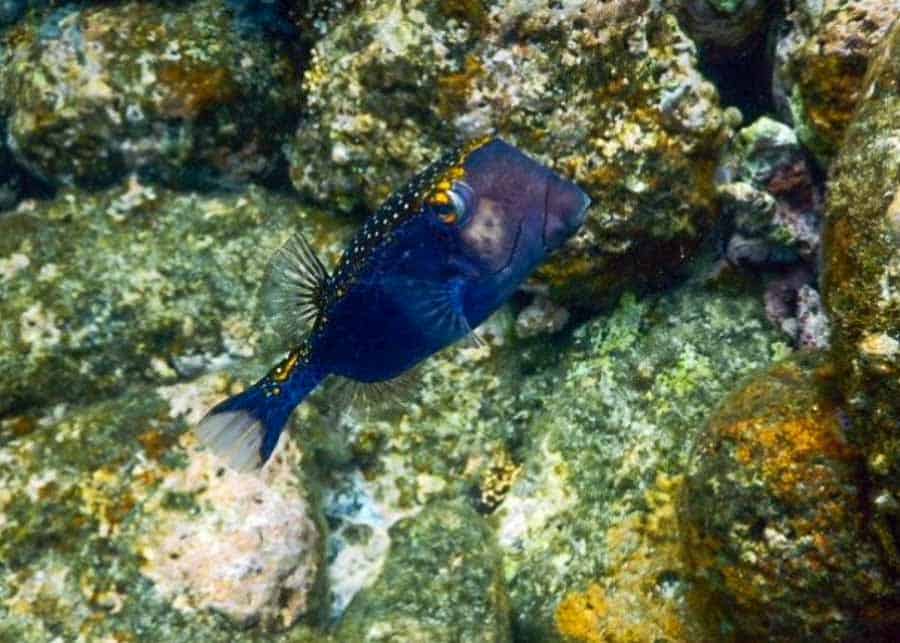
Tips for Visiting the Black Sand Beaches in Hawaii
Black sand beaches are beautiful sights to see, but they may be dangerous destinations if you don’t know what to expect.
One thing to keep in mind is that most of the black sand beaches in Hawaii are located in remote areas, where there is no lifeguards on duty. You should exercise caution when entering the water as heavy breaking waves can trigger a sudden rip current. But rip currents are hazardous even around low tide, when water is already pulling away.
Another thing to consider are the sharp, volcanic rocks hiding below the surface of the water. Always look around before venturing out for a swim.
Besides sand, on black sand beaches you can also find basalt rocks, andesite, and volcanic glass. These may be rough on the feet, so wearing coral shoes or sandals is a must.
Also, black sand tends to be hotter as it absorbs the heat, so the solution is to wear some sort of footwear on these beaches.
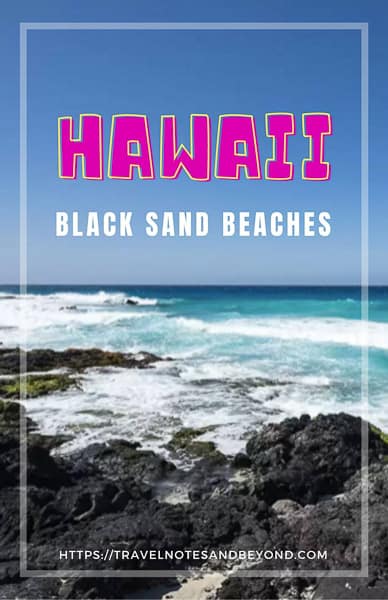

 Where to Find the Best Black Sand Beaches in Maui
Where to Find the Best Black Sand Beaches in Maui



Renee
I’ve never seen a black sand beach and so this would be a definite highlight to see these out if in Hawaii. How does one pick a favouite- they all look beautiful. I do especially like Pohoiki Beach and Richardson Beach Park. This is a great list for those lucky enough to go. Seeing them is such a contrast to white sand beaches, I do like the colour contrast of the black sand.
Anda
It’s hard to pick one, indeed. They are all so beautiful and yet very different.